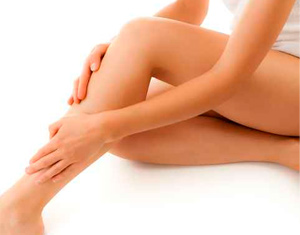 Varicose veins in the legs are swollen veins that appear lumpy and blue through the skin. These veins are part of the superficial venous sytem of the leg, and lie immediately under the skin, particularly of the calf. Veins have one-way valves which stop blood flowing backwards in the wrong direction. In varicose veins, the walls are stretched and become less flexible which weakens the veins and stops them from working properly, so blood is leaking backwards.
Varicose veins in the legs are swollen veins that appear lumpy and blue through the skin. These veins are part of the superficial venous sytem of the leg, and lie immediately under the skin, particularly of the calf. Veins have one-way valves which stop blood flowing backwards in the wrong direction. In varicose veins, the walls are stretched and become less flexible which weakens the veins and stops them from working properly, so blood is leaking backwards.
This condition is common and affects 30-40% of the individuals, a little more frequently women. Individuals with a family history of venous disease of the legs are at higher risk, too.
Apart from the cosmetic problem, varicose veins may become a “medical” problem causing ache, feeling of heaviness, burning, itching in the calves and swelling in the ankles. If the condition is long-standing, the risk for complications, such as inflammation (phlebitis), bleeding, skin changes and ulcers, increases.
Even if you do not have a noteworthy problem with your leg veins, you can preventively add aerobic exercise to your daily routine – like brisk walking, jogging, cycling, dancing or swimming – ie, activities which activate the musculovenous pump of the calves and prevent blood from pooling in your leg veins causing swelling. About 20-30 minutes of aerobic exercise every day is usually enough to tone up your blood circulation. Avoid unnecessary standing and exposure of your legs to heat sources, such as sunbathing or hot baths.
If you have already got varicose veins, do not worry. There is a way to get rid of them. Today, there are essentially pain-free methods to treat varicose veins.
The best results are usually achieved by appropriate and early management of the condition. The smaller the veins, the less invasive a procedure to remove them will be; this is commonly performed through very small incisions, practically without postoperative pain and with an excellent cosmetic result.
Dr Zacharias Androulakakis, consultant vascular surgeon, is highly qualified to examine and advise you on the most appropriate method of treatment in your case!
• He has large experience in diagnosing and treating venous conditions, such as varicose veins, spider veins, chronic venous insufficiency, leg ulcers and leg swelling
• He performs all types of modern vascular techniques including surgery and endovenous laser ablation for varicose veins, foam sclerotherapy for varicose veins, injection sclerotherapy for spider veins, elastic bandaging for leg ulcers etc
• He has a partnership with selected private hospitals in Heraklion Crete and in Athens
Last modified 03/03/2015






